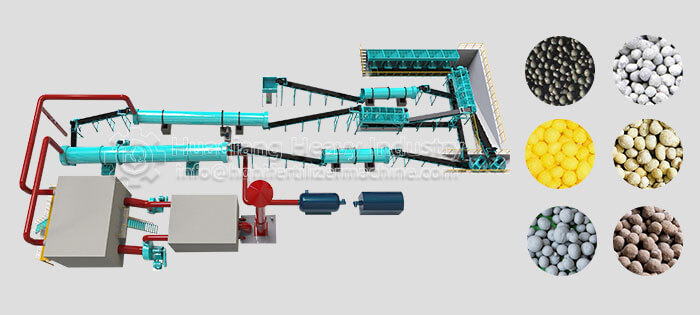
With growing environmental awareness, stricter requirements are now placed on the sustainability of NPK fertilizer production lines. Achieving energy efficiency and emission reduction has become essential. Here are practical approaches to meet these goals:
1. Optimized Raw Materials and Precise Formulation
Smart material selection and accurate nutrient ratios are key. By using advanced soil analysis, producers can tailor NPK blends to specific crop needs, avoiding excessive nitrogen (N), phosphorus (P), potassium (K), or micronutrients. This reduces material waste, lowers energy use, and minimizes emissions from unused nutrients.
2. Upgraded Production Processes
Energy-efficient equipment: Replace outdated machinery with modern alternatives like disc granulators, which save electricity and ensure better material mixing.
Heat recovery: Capture waste heat from drying stages via heat exchange systems. Reuse this energy to preheat raw materials, cutting fuel consumption.

3. Automation and Smart Controls
Real-time adjustments: Automated systems can fine-tune conveyor speeds, mixer intensity, and other parameters to match production needs, minimizing energy waste.
Predictive maintenance and energy tracking: Smart sensors detect equipment issues early, preventing downtime. Energy monitoring tools identify high-consumption areas for targeted improvements.
4. Waste Recycling
Repurpose by-products like off-spec fertilizers by reprocessing them into new batches. Recycle packaging waste instead of discarding it, reducing landfill pressure and material costs.
These strategies not only meet environmental goals, but also improve the efficiency and cost-effectiveness of fertilizer manufacturers’ NPK fertilizer production lines.